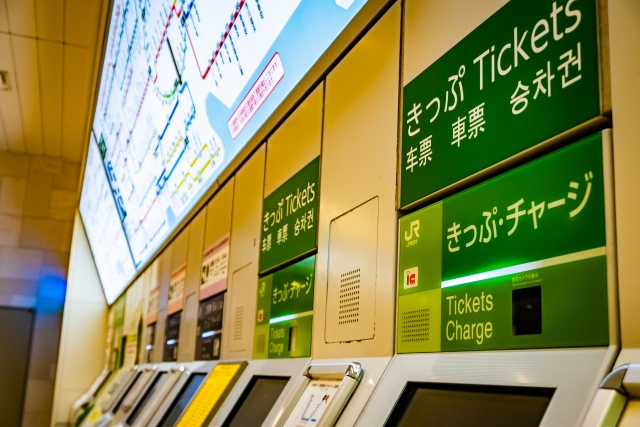Japan’s public transportation system is efficient, convenient, and well-connected. A crucial tool to make your travel seamless is a transportation IC card. Whether you’re a tourist exploring the country or a foreign resident settling in, this guide will walk you through everything you need to know about Japan’s IC cards, from the types available to how to use and recharge them.
What are IC Cards?
IC cards (Integrated Circuit cards) are rechargeable smart cards used for cashless travel on buses, trains, and even for small purchases in stores and vending machines. They can be used across different cities in Japan, making them a handy tool for both long-term stays and short visits.
Types of IC Cards in Japan
Although there are several IC cards available, they all function similarly and can be used interchangeably on most transportation systems across the country. Here are some of the most popular ones:
- Suica (スイカ)
Suica is the most well-known IC card, operated by JR East. It’s predominantly used in Tokyo but can be accepted in many regions across Japan. You can also use Suica for purchases at convenience stores, vending machines, and other locations that accept IC cards. - PASMO (パスモ)
Another popular card in the Tokyo metropolitan area, PASMO is operated by Tokyo’s non-JR private railways and bus companies. Like Suica, it can be used for transportation and small purchases. - ICOCA (イコカ)
ICOCA is the JR West version of Suica and is mainly used in the Kansai region, including cities like Osaka and Kyoto. ICOCA is compatible with Suica and PASMO, allowing you to use it across Japan. - TOICA (トイカ)
Issued by JR Central, TOICA operates in the Chubu (Nagoya) region and is also interchangeable with Suica, PASMO, and ICOCA. - Manaca (マナカ)
Available in the Nagoya area, Manaca functions similarly to the other IC cards and is accepted nationwide on most transit systems. - PiTaPa (ピタパ)
PiTaPa is primarily used in the Kansai region and works on a post-pay system, unlike the pre-paid model of Suica and PASMO. Note, however, that PiTaPa is less common for short-term visitors, as it requires a registered account.
Important Tip:
No matter which card you choose, IC cards from one region are compatible with transit systems and services across the country, making them convenient for travelers who want to explore multiple regions.
How to Purchase an IC Card
You can easily buy IC cards at various locations throughout Japan:
- Ticket Machines at Stations:
Most major train stations, especially those run by JR, offer IC cards for purchase through automated ticket machines. Look for English options on the screen to make the process smoother. - Ticket Counters (Midori no Madoguchi):
You can also purchase IC cards at station ticket counters if you prefer face-to-face assistance. Staff at major stations often speak basic English, and signage in English is widely available. - Airport Transportation Centers:
When you first arrive in Japan, you can purchase Suica or PASMO at transportation centers in major airports such as Narita, Haneda, and Kansai International Airport. - Convenience Stores:
Some convenience stores, such as FamilyMart or Lawson, allow you to buy or recharge your IC cards.
Price:
When you purchase an IC card, there is a small deposit fee (usually 500 yen), and the remaining balance is loaded onto the card for immediate use. For example, you may purchase a Suica for 2,000 yen, which includes a 500 yen deposit and 1,500 yen for transportation.
How to Use Your IC Card
- At Train Stations:
To use your IC card for train travel, simply tap it on the card reader at the ticket gates when entering and exiting stations. The fare will be automatically deducted based on the distance you traveled. - On Buses:
When boarding a bus, tap your IC card on the reader near the driver. Depending on the city, you may need to tap again when exiting. If you’re unsure, watch how locals use their cards or ask the driver for help. - Shopping & Vending Machines:
IC cards can also be used for small purchases at convenience stores, vending machines, and some restaurants or cafes. Simply tap the card on the IC reader at checkout.
How to Recharge Your IC Card
- At Ticket Machines:
Recharging (or “topping up”) your card is simple. Most ticket machines have an “IC Card Recharge” option. You can add funds in multiples of 1,000 yen. The machines accept both cash and, in some cases, credit cards. - Convenience Stores:
You can also recharge your IC card at most convenience stores across Japan. Just hand your card to the cashier and tell them how much you’d like to add.
Can Foreigners Get a Refund?
If you no longer need your IC card, you can return it to a JR ticket counter or other official service desk in exchange for a refund of the remaining balance. The 500 yen deposit will also be refunded, though a small handling fee might be deducted.
Useful Links for More Information
- JR East Suica Guide (Official English Site)
- PASMO Official Site (English)
- ICOCA Official Site (JR West)
By understanding how Japan’s IC card system works, you’ll save time and avoid the hassle of purchasing individual tickets. Enjoy exploring Japan with the convenience of a single card that simplifies your transportation needs!





